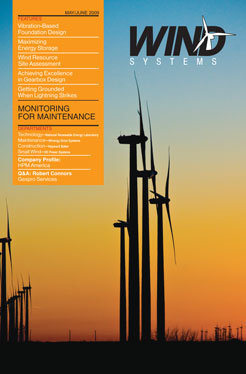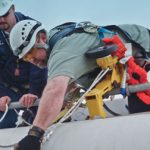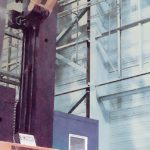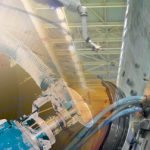In a recent report covering the last quarter of 2008 in Europe, 54 gearbox failures attributed to either wear or failure equaled 8,177 hours of downtime. This downtime includes the actual repair, lost production, and crane costs. Since a catastrophic gearbox failure on an average megawatt class wind turbine costs somewhere between $225,000 and $300,000 to remediate, more and more people are looking for maintenance methods to address costly gearbox issues.
No matter the industry, it seems that maintenance practices fall into three basic categories:
• Wait until it breaks;
• Maintain at an interval;
• Predict maintenance.
The approach that we are focusing on in this article involves using vibration analysis to predict maintenance. There are many tools for predictive maintenance, with vibration being one of the most prolific. While predicting maintenance using vibration is widespread in other industries, for various reasons—and despite some challenges—the wind industry is quickly adopting a predictive maintenance culture.
Inspection Info
It is generally accepted that most things fail in a “bathtub” type failure curve. It has a higher probability of failing early in its service life, or later in life as it wears (fig. 1). It stands to reason that testing of gearboxes needs to occur during assembly, commissioning (both early stages), and during the life of the wind turbine to catch the other end of the failure curve. In addition, gearbox rebuilders as well as manufacturers would be wise to adopt vibration acceptance testing prior to sending gearboxes out into the field (fig. 3). The reasoning is simple, really—Do you want to change a bearing or gear in your repair facility or up tower?
In the table labeled fig. 2 you can see how the common wind turbine inspection methods compare. This table was created with help from Don Roberts, project engineer with DNV Global Energy Concepts, Inc. DNV/GEC is a company that, among many other services, provides these types of inspection. While there are exceptions, this table holds true for many of the most-common gearboxes in wind when using these inspection techniques. What we are trying to illustrate is an understanding as to how these inspection techniques compare in this application. You can see that an open inspection leaves most of the gearbox unseen. A bore scope inspection is better, but on average leaves large gaps in detection.
Vibration detects all of the meshing and bearing fault frequencies. What it does not do, however, is specifically identify which of the three planetary bearings is failing. Vibration will simply tell you that one of the three bearings is at fault. Not that this is a bad thing, because the end result is the same. Furthermore, vibration will detect conditions that are not seen by a camera or the human eye. These are issues such as imbalance, misalignment, mechanical looseness, and resonance conditions.
Various Vibrations
Vibration analysis is as easy as you want to make it. With that said, in wind turbines it is difficult to get right, which is probably why so many get it wrong. Let’s opt for easy, though grossly under-explained, just for explanation’s sake. The peaks indicate in frequency specifically where a problem is occurring. In fig. 4 it is the planetary gear mesh frequency. The amplitude (height) of the peaks indicates the severity of damage at that specific location. In this image the problem is at the planetary section, and at the early stages based upon the amplitude. So, with vibration, not only do you know where, but relatively how bad. Again, the frequency indicates where and the amplitude indicates how severe.
Gear Mesh Frequency (GMF) is a vibration signal that occurs when two gears mesh together. The higher in amplitude the signal, the more severe the damage, and the further it has progressed. A very basic explanation involves the following equation:
Gear (tooth count) x RPM = GMF
In a vibration signature that is displayed in a “spectrum,” a gear with eight teeth running at 15 rpm would have a GMF at 120 rpm. This is the basic math of why we see peaks in vibration at GMF. This is greatly oversimplified and not completely accurate for planetary gearboxes, but it provides a basic understanding of what generates GMF. Two gears meshing together times the speed. Of course, you don’t need a calculator to determine GMF because these calculations are likely in a wind turbine vibration monitoring software program (fig. 5a & fig. 5b). The point is that vibration analysis does detect gear issues specifically. And again, the frequency indicates where, and the amplitude indicates how severe.
Another generalization is that a gearbox is a box with gears and bearings. It is similar in math as in determining gear problems, but instead of teeth bearings have rolling elements. So if there are 14 rolling elements in a bearing, RPM paired with an equation is used to locate the fault in a vibration signature in a bearing. And while there are four parts to a bearing—rolling elements, cages, and inner and outer races—they are similarly detected in the vibration signature using RPM. Most major wind turbine vibration software companies should have thousands of bearings in a library, making identification of a bearing or its subcomponents easy (fig. 6).
It really is overkill to detect all of these subcomponents since one likely doesn’t care which one is bad and just needs to know that a bearing should be replaced. While this is correct, if a trend is noticed in a specific part of the bearing failing, it may actually point to another root cause altogether. An example would be if several inner races in the same bearing across several gearboxes were failing. This might point to either the incorrect bearing fitment or improper installation.
Why Online?
A traditional handheld vibration instrument is not viable for many reasons in wind turbines. Safety, variability of wind—or no wind—and infrequency of measurements are just the start of why a traditional portable is not feasible. There are at least a dozen more legitimate reasons and challenges to a portable approach, although such a unit is fine for test stands in rebuild shops for this industry.
An installed online vibration monitor is a far better approach because it doesn’t involve visiting the site or climbing the towers. Also, you can corral vibration information from several farms remotely. As many negatives as there are to portables, there are just as many positives to an installed condition monitoring system.
One trend to consider involves European insurance companies that feel so strongly about condition monitoring they make it part of the policy requirement. Basically, either you use vibration condition monitoring or you rebuild the gearbox about every five years. The choice is yours… if you want their insurance, that is. One would imagine that, in the United States, similar condition monitoring requirements are not far off. Besides safety, the demand for production, reliability for investors, and PPAs are but a few reasons why an insurance company would dictate similar condition monitoring requirements in the States.
Cost Justifications
To provide an example, over the 20-year design life of a wind turbine let us assume that one gearbox failure occurs during that period on half the farm. Over a typical 100-unit wind farm project, this means 50 gearboxes will fail over the life of the project in this particular example. In a second example we will use the European insurance suggested interval, which is at about the five-year interval. This assumes that, over the 20 years, there will be a gearbox failure every five years. Again, on average, and across half the assets, this adds up to 200 rebuilds in the second example.
So, per 100 turbines, the range on gearbox failures over 20 years would be 50 gearboxes in the first example and 200 in the second. If you take the number we discussed earlier, which is about $250,000 per average catastrophic event, the expense costs on 100 turbines would be $12,500,000 in the first example and $50,000,000 in the second.
This only assumes a gearbox failure. We can add in generators and main bearings failures and the numbers jump measurably. Considering that the current cost of an online wind turbine vibration monitoring system is in the $6,000-$15,000 range per turbine, the cost of predicting maintenance far outweighs the maintenance costs even when using the most expensive system in the best-case scenario. To add a finer point, remember that this justification was just for gearboxes, excluding main bearings and generators.
Furthermore, the cost of one gearbox failure alone would cover the cost of outfitting somewhere between 16 high-cost and 41 low-cost system turbines with condition monitoring for the life of the asset. An online system such as this would also monitor not only the gearbox, but also the other common high-cost repairs such as the main bearing and generator.
Another perspective on this approach to maintenance is to look at the cost of a system spread over the life of a wind turbine. The cost of a wind turbine vibration monitoring system over the usable 20-year life ranges from less than a dollar to about two dollars a day. Again, systems cost between $6,000-$15,000 per turbine, which means that the prorated cost of installation is less than a daily cup of coffee. Put into these terms, it’s easy to see how this affordable monitoring system will pay for itself many times over its service life.
Avoiding Catastrophe
Some will say that, if the gearbox is failing, what are you really saving? It will surely fail anyway. Most of the gearbox problems caught using vibration monitoring involve up-tower repairs because they are detected early, before catastrophic failure occurs. As a common example, a high-speed shaft repair can be up-tower when detected early. Other detected conditions—such as misalignment, for instance—are also reversible before damage results. It is common to see months of downtime when problems aren’t caught in advance by using vibration analysis in gearboxes.
Secondly, with long lead times for repair parts, having several months’ notice to have them delivered, along with cranes and other necessary equipment, provides a definite production edge. Maintenance decisions such as these can revolve around wind season, other repairs, or when the repair would be most advantageous. And don’t forget due diligence inspections for newly purchased sites.
Conclusion
By using the tools available to the wind-power industry, one has the ability to run maintenance on their own terms. That’s really at the core of what predictive maintenance provides. For wind this translates into knowing what needs to be fixed before it fails. It also means that crane callouts can be grouped for multiple repairs. Also, parts can be ordered in anticipation of making repairs. And, finally, repairs can be scheduled around wind season to maximize production and minimize downtime. Predicting maintenance is like predicting production, in that reliability equals production.








































